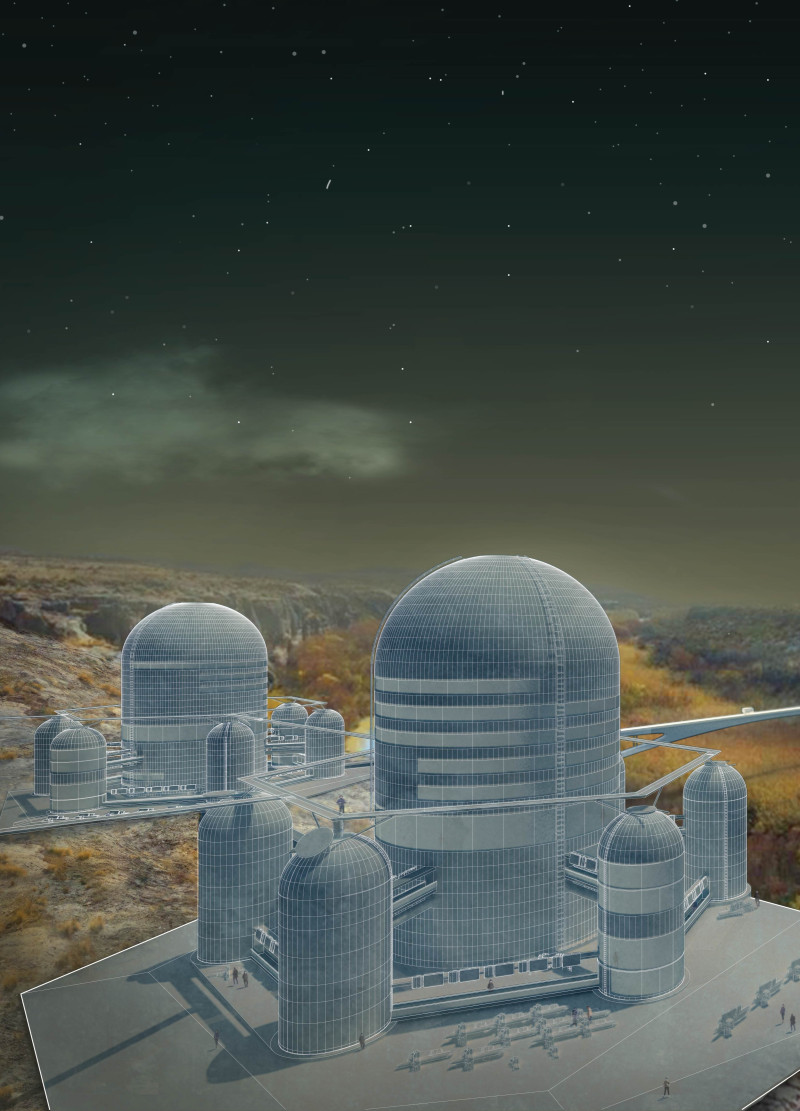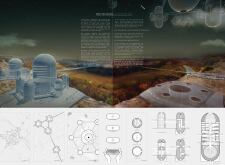5 key facts about this project
The Pavilion is designed to explore humanity's connection with space, set in West Texas, a region known for its history in aerospace endeavors. The structure aims to foster a community-oriented environment that emphasizes ecological responsibility, the sharing of knowledge, and a recognition of cultural histories. The Pavilion envisions a future where humanity may need to live beyond Earth, preparing for challenges through thoughtful architectural solutions.
Egalitarian Organization
At the heart of the Pavilion is a decentralized structure featuring six interconnected libraries. These spaces connect with various residential hubs within the design. The private hubs are large and stable, symbolizing community strength and support. They serve as homes for librarians who manage resources. In contrast, the public libraries are smaller and adaptable, designed to encourage flexibility and the exchange of knowledge. Together, these elements highlight key aspects of human existence: SEED, CULTURE, and TECHNOLOGY.
Ecological Sustainability
The design recognizes the urgent issue of diminishing resources, proposing that the Pavilion could function on Earth or in orbit around it. Its success relies on how well humanity cares for its surroundings. By taking lessons from Earth's environmental struggles, the Pavilion seeks sustainable practices for potential living conditions beyond our planet. The surrounding desert ecology offers valuable lessons in resilience, influencing how the design adapts to various challenges.
Cultural Engagement
Culturally, the Pavilion addresses important historical and social themes, especially those related to injustices at the U.S.-Mexico border. By creating a welcoming space for diverse cultures, the design encourages dialogue and healing. This emphasis on inclusion aims to make the Pavilion a center for mutual support and understanding, allowing different communities to connect and collaborate.
Materiality and Design Intent
While the presentation does not specify particular materials used, the focus remains on the conceptual design rather than physical elements. The principles guiding the Pavilion prioritize functionality and meaningful interaction with the space. Each decision aims to help visitors engage with the ideas presented, using the varied spaces to learn and share knowledge.
From the connections between its libraries to the inviting areas for collaboration, every aspect of the Pavilion’s design supports its mission of preparing humanity for new possibilities in the universe.



















































